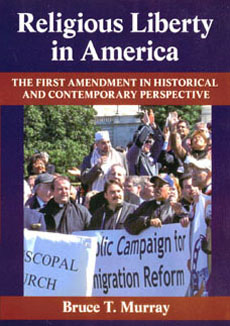‘Correcting’ Christmas

Dispute over yuletide tree ushers in annual ‘culture war’
By Bruce T. Murray
Author, Religious Liberty in America: The First Amendment in Historical and Contemporary Perspective
The annual rumble over “correct” holiday symbolism got off to an early start this year when Chase bank ordered the removal of a nine-foot Christmas tree from the lobby of the bank's branch in Southlake, Texas. The tree had been donated by a bank patron as a gift, but the Chase corporate office was concerned that the tree might make some of its patrons uncomfortable, according to the Fort Worth Star-Telegram.
The Chase incident puts on display, yet again, the perennial battle for the year-end holy day – or secular holiday – and who gets to define it. The Christmas controversy is part of the larger, longstanding “culture war” in America over the proper role of religion in public life. In what might appear at first glance to be a petty squabble, the stakes in the broader struggle are high: Whose religion, values or ideology will dominate the national culture?
In previous centuries, the debate over Christmas was entirely different. The celebration of Christmas was brought to America somewhat late in colonial history by Lutheran immigrants from Germany and Catholics. The early American Puritans and Calvinists objected to the celebration of Christmas because of its “papist” associations, as Justice William Brennan observed in the 1984 Supreme Court case, Lynch v. Donnelly. In modern times, parties to the Kulturkampf are often the American Civil Liberties Union on one side, versus the various state and local governments that are responsible for religious displays on public property.

The University of Massachusetts Press book, Religious Liberty in America: The First Amendment in Historical and Contemporary Perspective by Bruce T. Murray, analyzes the culture wars in the context of America's longstanding debate over religion in public life. Murray interweaves history and current events to provide a depth of perspective on numerous controversial issues, including religious symbols in the public square, religion in politics, church-state conflicts – and related battles on the Supreme Court.
“Religious Liberty in America is a well-written, concisely argued book. ... Its most important success is how well Murray connects current controversies with past events, always well positioned in the broader context of First Amendment religious freedom goals and objectives.”
— Kurt Hohenstein, Winona State University (from H-Law, November, 2010)“This book is a helpful introduction to religious freedom in America today, and in history. Implications of the First Amendment affect a great many dimensions of our social and personal lives, and Bruce T. Murray provides a historical map as context for considering questions that we continue to try to answer together.”
— Elizabeth Tauba Ingenthron, Graduate Theological Union (from the Anglican Theological Review, Winter 2010)
Religious Liberty in America is available at libraries throughout North America, and it may be purchased from the University of Massachusetts Press.
Find out more about the author here.

